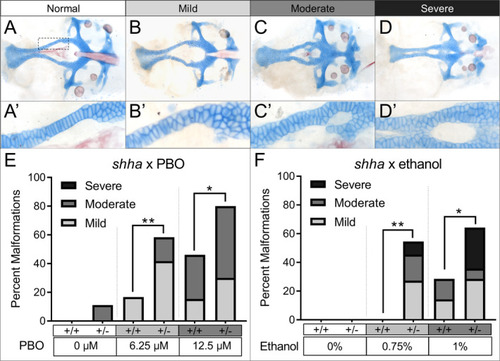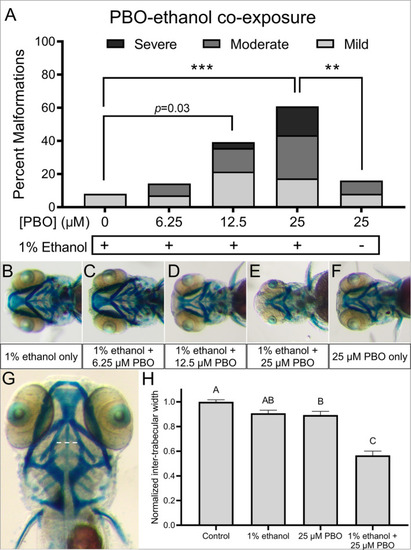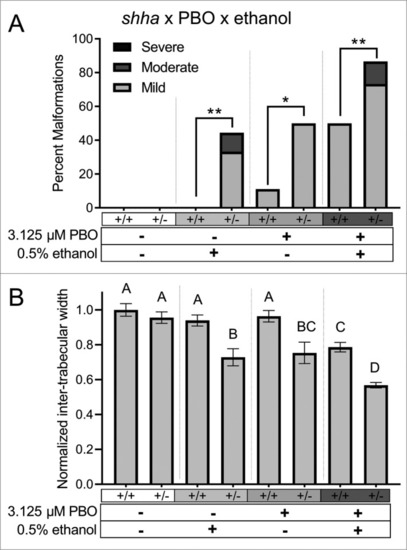- Title
-
Multifactorial Genetic and Environmental Hedgehog Pathway Disruption Sensitizes Embryos to Alcohol-Induced Craniofacial Defects
- Authors
- Everson, J.L., Batchu, R., Eberhart, J.K.
- Source
- Full text @ Alcoholism Clin. Exp. Res.
|
Hh pathway mutations sensitize embryos to ethanol‐ or PBO‐induced craniofacial defects. ( PHENOTYPE:
|
|
Ethanol and PBO synergistically interact to cause craniofacial defects. ( PHENOTYPE:
|
|
Mutations in |



